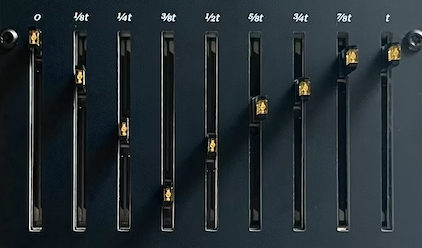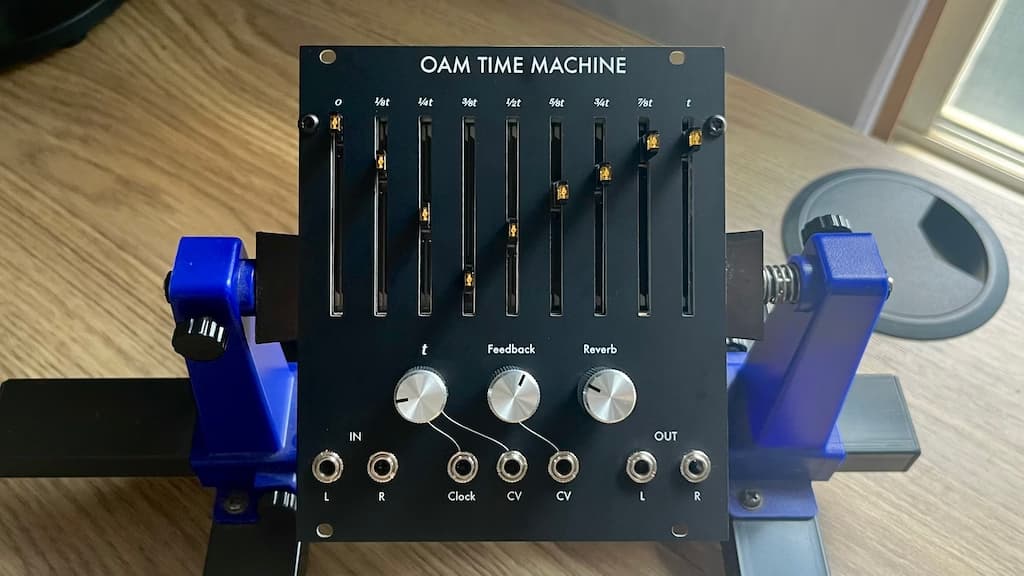Delay is a versatile synthesis technique. It allows us to create hypnotic rhythmic textures as well as sound design with flanger, comb filter, and karplus strong.
Olivia Artz Modular (OAM) has created a new eurorack module with a more tactile way of creating music with delays.
Time Machine is a multi-tap delay eurorack module that was successfully funded in under 48 hours on their Kickstarter page (the campaign is still live at the time of posting this).
This new module is a “tactile interface for mixing together 8 delay lines with the original input signal”. The volume of each 8 delayed versions of an input (with increasing delay times from divisions of 1/8, 1/4, 3/8, 1/2, 5/8, 3/4, 7/8, and 1/1) are controlled by the high quality Bourns faders.

The performer has an expansive range of delay time that allows for several seconds between each of the 8 delayed voices or short enough delay times to create flanger, comb filters, and Karplus–Strong effects.
This new module looks so intuitive that the Kickstarter campaign was successful even without a demo video!! It’s not surprising though given the fact that the photo and the audio demo tell everything that the backers needed to know.

And yes, Time Machine is powered by Daisy! It also played an important role during the prototyping phase as shown in the functional prototype demo video in the campaign page.
Hmmm, I wonder what she is using here? ![]()
Eris Fairbanks wrote the engine by leveraging her 15+ years of experience coding granular engines, virtual worlds, and synths.
Tech specs
- High-resolution stereo DSP
- Width: 22 HP
- Depth: 30mm
The team behind the Time Machine is Olivia Artz Modular, which is a “collective of trans and gender non-conformant artists and builders who are working together to bring [their] dreams into the world. [They’re] neurodivergent people who lean on each other”.
Because the Time Machine is built using the Daisy, you can write your own firmware for it! And OAM encourages it! And they will also document the platform. It’s worth knowing that they worked on the open source documentation and example firmware for the Noise Engineering Legio platform.

